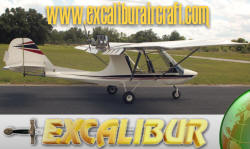| The retract system is an integral part of our float system.
The wheels are not mounted inside the floats. They are located between the two floats.
All components are exposed
and allow for easy preflight inspection. If needed the wheel assembly can be easily removed for
long term water only operations.
Located approx. 24" ahead of the float step in each float is a receiver tube assembly that is
mechanically attached to the interior of the float.
A heavy wall 2" diameter tube connects the
two floats via the receiver tubes, this tube is called the "RG Crosstube". This crosstube is allowed
to rotate in plastic bushings located in the receiver tubes. Attached to this cross tube are the
two down legs to which the wheels are attached. The two wheels are located between the two floats
and ahead of the aircraft's center of mass. The extreme rear (bottom) of the floats drag on the
ground just as a tailwheel would without the wheel.
To prevent damage to the floats a replaceable
High Density Plastic (TeflonŽ) wear pad has been installed at the wear area. This pad prevents the
floats from being damaged during ground operations. Ideally the runway should be grass, however, we
keep our a/c in a hanger with concrete floors and dragging the floats on this surface does not seem
to be detrimental to the wear pads.
The wheels are moved in the up and down position by means of cycling a tubular lever in a 90 degree
arc.
The lever is located on the left side of the pilot below the throttle quadrant. In the wheels
down position the handle of the lever is located in the area where the wing wires attach to the tri
bar crosstube. The wheels are secured in the down position by means of 3/8" shock cords. Anti-drag
cables restrict the limit of rearward travel.
In the up position the lever is located against a
lock which is attached to the axle strut. Access to the lever is convenient and comfortable.
The wheels in the up position locate them just under the seat out of the way and well above the
water line.
 Taxiing the system does take some practice. If you have any conventional (tail dragger) experience
at all you will be very comfortable with this system. Taxiing the system does take some practice. If you have any conventional (tail dragger) experience
at all you will be very comfortable with this system.
The amount of power regulates the diameter of
the turn. Low power -- Large turn. You get the idea. With a little practice precise maneuvering is
a snap. 360 degree turns can be accomplished in less than a 10' radius. Slow taxing is done with
the stick in the full forward position. As speed is increased it is necessary to neutralize the
stick to prevent the front of the floats from running on the ground. High speed taxing is done by
holding the floats level to the ground.
Takeoff with the retract system is very easy. Hold the stick in the aft position, slowly add power
and adjust the stick to allow the a/c to seek a level attitude. When flying speed is reached slowly
rotate as usual.
Landing the system on the ground is exactly as you would land the floats on the water....fly level
to the ground all the way to touchdown. Once the wheels are on the ground pull the stick aft
forcing the rear of the floats to drag the ground and the plane comes to a stop, simple. If you
must land in a very short field simply land with the gear UP.
This load will not damage the floats
in any way. Once on the ground position the lever to allow the wheels to go in the down position,
pick up the front of the plane and the shock cord will pull the wheels into the down position and
you're ready to roll again.
Maintenance is accomplished by simply lubricating the plastic bushings located inside the receiver
tubes. All structural materials are 6061-T6 aluminum. The wheel axles are 4130 chromemoly steel.
All fasteners are AN grade. If operations are conducted in salt water the same preventative
maintenance should be applied to the retract system as would be to the aircraft.
The only wear
replaceable items would be the plastic bushings and possibly the shock cords
The retract system is shipped with everything needed to assemble and install the unit.
All of the
tubing is pre cut and drilled. A total of 5 holes will be drilled by the customer. Set-up, assembly
and installation will consume the better part of an easy day. Simple hand tools are all that is
required.
A detailed assembly manual along with a 48 minute VHS instructional tape is provided to
assist in the assembly. An assistant will be helpful although if you are the only person on the
island it can be done solo.
|


 Taxiing the system does take some practice. If you have any conventional (tail dragger) experience
at all you will be very comfortable with this system.
Taxiing the system does take some practice. If you have any conventional (tail dragger) experience
at all you will be very comfortable with this system. 